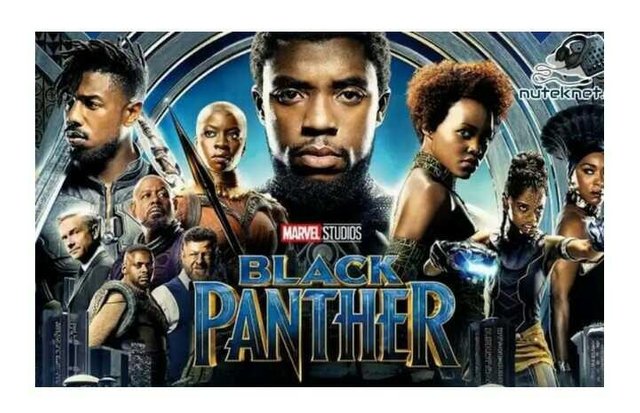Music review//Black Panther Original Score

Today we will review the Ludwig Goransson Black Panther Original Score Western Music. In a blockbuster film, nothing says "important" like the imposition of a large orchestra - especially those who love Eurocentricity which historically contradicts a black expression.
The use of such an orchestra in the Black Panther is very interesting because this film is the first of its magnitude to bring the joy of an African utopia that never existed. The story wraps itself with a certain kind of greatness that traditional classical orchestras are rarely put forward.
Ludwig Göransson - composer of the Black Panther score who often worked with film director Ryan Coogler, not to mention Childish Gambino - included several African accents in a 132-piece orchestra, but even he noted that it wasn't really enough. "The hardest part is that once you enter production and orchestra over African music, that sound is no longer heard in Africa," he told Pitchfork. "So the challenge is to combine these things and keep them feeling African."
WEST MUSIC REVIEW LUDWIG GORANSSON BLACK PANTHER ORIGINAL SCORE
Part of what makes the use of African music by Göransson from feeling folded is how he recognizes the extent of the Black Panther universe. Swollen horns and polyrhythms don't tremble with awe, but with trustworthy intimacy; the reference point is not a mere African idea, but all ideas include. In a spectacular way, Göransson's score captures the diversity of Wakanda's fictional countries.
"Wakanda" - which plays when the hero, the Black Panther T’Challa, prepares to take his throne in the act of opening the film - offers a glimpse of such specificity. T’Challa started the film as the heir to a new kingdom that felt the size of the deceased's father's legacy, and at this very vulnerable time, Senegalese musician Baaba Maal earnestly chanted a song that served as a metaphor for the fallen king. Göransson doesn't just beat from a diasporic box; He burned it in an emotional context. Sadness adds gravity to the next part: Regal brass adorns a wide Wakanda bullet, signifying the glory it will have.
The film's main villain, Erik Killmonger, was given the same care and development. Not only is he a stranger to the nation despite his family ties; His worldview is hardly in contact with T’Challa, which places his loyalty to his nation for Killmonger's desire to empower blacks outside the continent. The piece of music named after him embodies the inner conflict that drives his actions. The tambine flute appears as the presence of a ghost, the tone of the wind piercing with the insistence of ancestral jokes from the afterlife. But the theme is overcome by the hi-hat trap that now dominates hip-hop. His change and intimacy put Killmonger back as an African-American, whose suffering that generations made him unable to control Wakanda isolates.
So when Killmonger brought these elements with him to Wakanda, he became a bully. The Black Panther's truth did not make him happy at first. The royal horns and drums that once marked the presence of T'Challa - a marker of his pride - reduced to panting in the second important scene where his rival destroyed him in one-on-one battles, sometimes calming at the same time to emphasize the brutality of the more venomous Killmonger scene. hastily when we see him marching towards the throne, when the camera flips upside down and hi-hats sway once more. Yes, his role as an outsider comes from a criminal. But how many homes are Africa, really, for African Americans when they are systematically released from the homeland for centuries?
Despite the emphasis on African instrumentation, the classical elements of the score are not only as accouterements: The orchestra provides its traditional greatness while the African signature humanizes it. The most important example is the string phrase that rises in the "Ancestor Plane" section - the emotional part that expresses tension and surrender, like a fist that is not covered by divine humility. The theme was displayed when T'Challa visited the mythical ancestral aircraft as part of its ritual duties as a new king. When he looked at the beautiful and purple universe, this music helped the audience share in his respect but it never felt like creating that emotion.
This is Göransson's proof that he gave the most satisfying moment when scoring goals in the African diaspora. Towards the end of the Black Panther, T’Challa brings the wounded Killmonger to the cliff so that tragic fighters can stare at the majesty of Wakanda. The orchestra gave the scene the weight of the climax, but eventually receded to push Baaba Maal's robe to the surface. There is a victory mixed with mourning as he sings to this beautiful fictional land. Unfortunately, the sun must also be set on Wakanda.
Hello @alies2, thank you for sharing this creative work! We just stopped by to say that you've been upvoted by the @creativecrypto magazine. The Creative Crypto is all about art on the blockchain and learning from creatives like you. Looking forward to crossing paths again soon. Steem on!